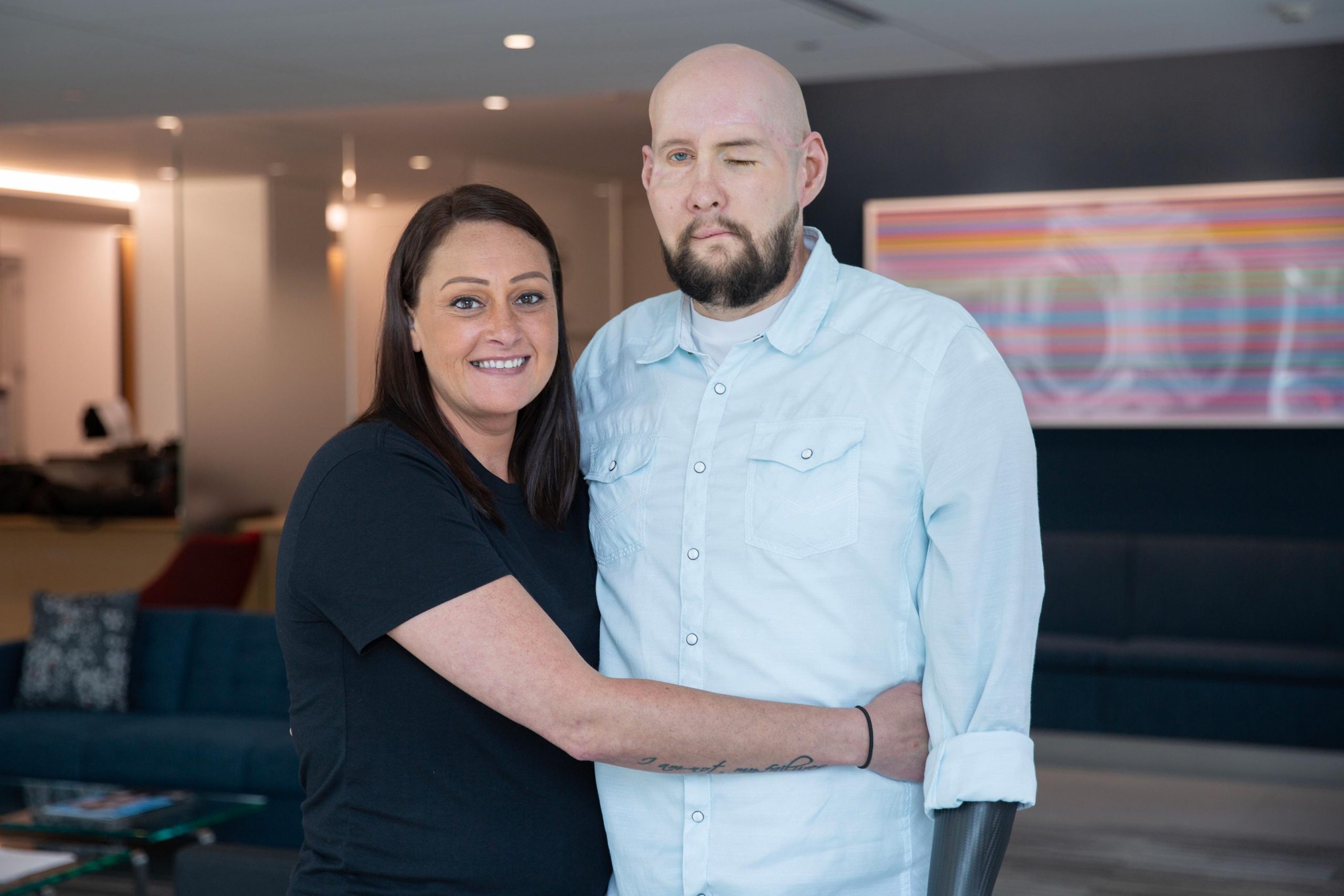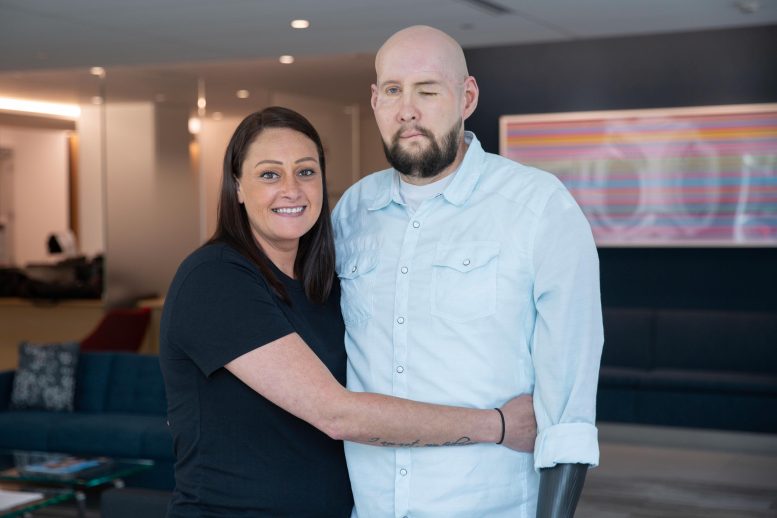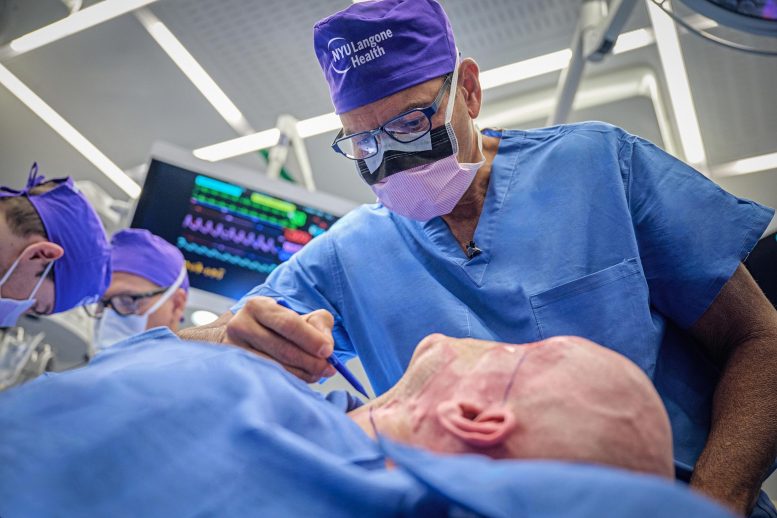

The world’s first combined face and whole-eye transplant success started with innovations in transplant blood flow.
- The world’s first combined face and whole-eye transplant utilized personalized surgical cutting guides and an innovative “shortcut” technique to maintain blood flow to the transplanted eye.
- These advanced methods ensured optimal blood circulation to the retina, crucial for preserving the eye’s viability during the procedure.
NYU Langone Health’s surgical team that performed the world’s first combined face and whole-eye transplantation will present details of this groundbreaking work at the 2024 American College of Surgeons (ACS) Clinical Congress in San Francisco. Their success demonstrates that it is possible to transplant an entire eye along with a face, marking a major step forward in this field.
Performed in 2023, this operation highlights the future potential of eye transplant procedures and represents a significant breakthrough in vascularized composite allotransplantation (VCA). VCA is particularly challenging because, unlike organ transplants that involve a single type of tissue, such as a kidney or heart, it requires transplanting multiple types of tissues—skin, muscle, blood vessels, nerves, and sometimes bone—all in one complex procedure.

Led by Eduardo D. Rodriguez, MD, FACS, director of the face transplant program at NYU Langone Health, the surgery involved a multidisciplinary team of more than 140 medical professionals. The transplant was performed on Aaron James, a 46-year-old military veteran from Arkansas, who suffered extensive facial and eye injuries from a high-voltage electrical accident.
Optimizing Transplant Viability
According to the researchers, the primary goal was to ensure the transplanted eye remained viable, and the innovative techniques used were critical to achieving that outcome. The team focused on optimizing blood flow, a key factor for the long-term success of such a complex transplant.
The team developed a microvascular bypass technique to maintain blood flow to the transplanted eye. This bypass used nearby blood vessels, specifically the superficial temporal artery and vein, which were rotated to connect to the transplanted eye’s ophthalmic artery and vein. This innovative approach minimized retinal ischemia (loss of blood flow) and simultaneously restored blood flow to the face and eye, addressing a major challenge in eye transplantation.
Key Surgical Achievements
- Reduced Ischemia: The bypass technique shortened the time without blood flow, protecting the transplanted eye.
- Enhanced Blood Flow: Post-surgery tests confirmed strong blood flow to the retina and other critical areas.
- Surgical Precision: Customized cutting guides ensured precise alignment and preserved the intricate structures of the eye and surrounding tissue.
Impact of Surgical Success
“The successful transplantation of a face and whole eye demonstrated that with the right surgical techniques, a whole-eye transplant is feasible and can maintain long-term viability,” said Bruce E. Gelb, MD, FACS, associate professor, department of surgery, at NYU Grossman School of Medicine. “Aaron James, the patient, was made aware that while sight restoration was not the goal, maintaining a healthy, vascularized eye represented a critical breakthrough that could significantly impact the feasibility of similar procedures in the future.”
Reference: “Revolutionizing Vascularized Composite Allotransplantation: Surgical Underpinnings of the World’s First Combined Face and Whole-Eye Transplantation” by Sachin Chinta, BS; Alay Shah, MD; David Tran, MD; and Daniel J. Ceradini, MD, Scientific Forum, American College of Surgeons (ACS) Clinical Congress 2024.